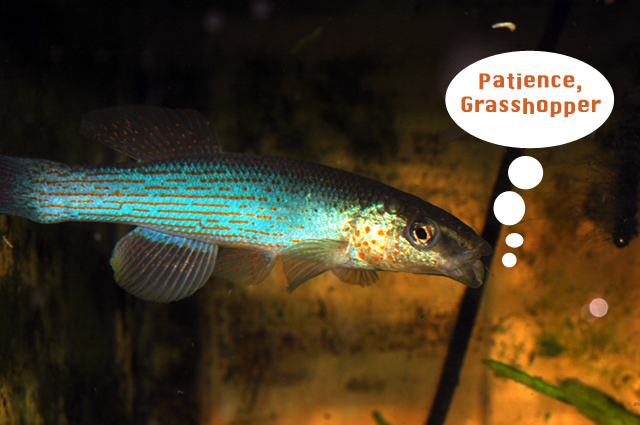Fundulus catenatus
#1
 Guest_jeremybasch_*
Guest_jeremybasch_*
Posted 06 November 2011 - 06:39 PM
Jeremy Basch
#2
 Guest_countrybumpkin_*
Guest_countrybumpkin_*
Posted 06 November 2011 - 08:31 PM
I believe they are in the Little Miami River in OH.I have read that this fish is found in Indiana and Kentucky. Is this true? Has anyone caught these in Indiana? Which river system? I might be interested in acquiring this species if that is the case since they are just a state over. Thanks for the help!
Jeremy Basch
#3
 Guest_smbass_*
Guest_smbass_*
Posted 06 November 2011 - 11:14 PM
#4

Posted 07 November 2011 - 09:35 AM
I just would advise being sure you make sure they stay in your tank...
I know Brian meant this in a different way, but this is a concern from an aquarium keeping perspective as well. They are strong and athletic fish and are somewhat prone to jump. Also, they seem to require a rather high food intake and without a lot of food they sort of waste away over time. But they are beautiful... I tried to keep a few when I was in Alabama and they were common there... but was never successful long term at keeping them fed... so I stopped trying.
#5
 Guest_farmertodd_*
Guest_farmertodd_*
Posted 07 November 2011 - 10:56 AM
There is always a chance that you won't end up with a male... However, in the two times I've done this (with both northern and southern), I was able to get a couple males. They will pair up and the dominant ones will kill the others eventually. I've ended up with an individual in adult coloration of each sex within 2 years, and then the burn-your-eyes-out-color of the male in 3.
Regardless, they're the jumpiest fish I've ever kept, and I wouldn't have them in any system that didn't have a great amount of cover, either plants or woody debris that goes to and possibly over the water's surface.
It will also require a large aquarium after they begin to grow, with all back holes sealed, else they end up on the floor. This will affect your gas exchange, so you need to account for that.
They are easy to feed if you start with juvies. They'll take any prepared food, esp if you have good current distributing it around the tank.
While immaculate in the wild, unless you plan to provide all these stipulations, you'll probably just want to appreciate them outside.
Todd
Edited by farmertodd, 07 November 2011 - 10:57 AM.
#8
 Guest_Skipjack_*
Guest_Skipjack_*
Posted 07 November 2011 - 09:20 PM
#9
 Guest_farmertodd_*
Guest_farmertodd_*
Posted 08 November 2011 - 01:10 PM
You know what is funny is that the big males are gregarious in the pools of the Clifton Gorge, esp in the pools along the Narrows Trail. I've never witnessed that behavior anywhere else, and the remainder of the community in the LMR isn't that much different than anywhere else they occur. I wish the water was a little more clear, I'd try to get a permit to film it.
Todd
#10
 Guest_gerald_*
Guest_gerald_*
Posted 08 November 2011 - 02:20 PM
You know what is funny is that the big males are gregarious in the pools of the Clifton Gorge, esp in the pools along the Narrows Trail. I've never witnessed that behavior anywhere else, ...
#15
 Guest_gerald_*
Guest_gerald_*
Posted 09 November 2011 - 11:33 AM
The funny thing is, snubnose and saffron darters scoot around these same pools with apparent lack of concern. I guess they are more confident in their ability to get under cover in case of attack.
Reply to this topic
1 user(s) are reading this topic
0 members, 1 guests, 0 anonymous users










